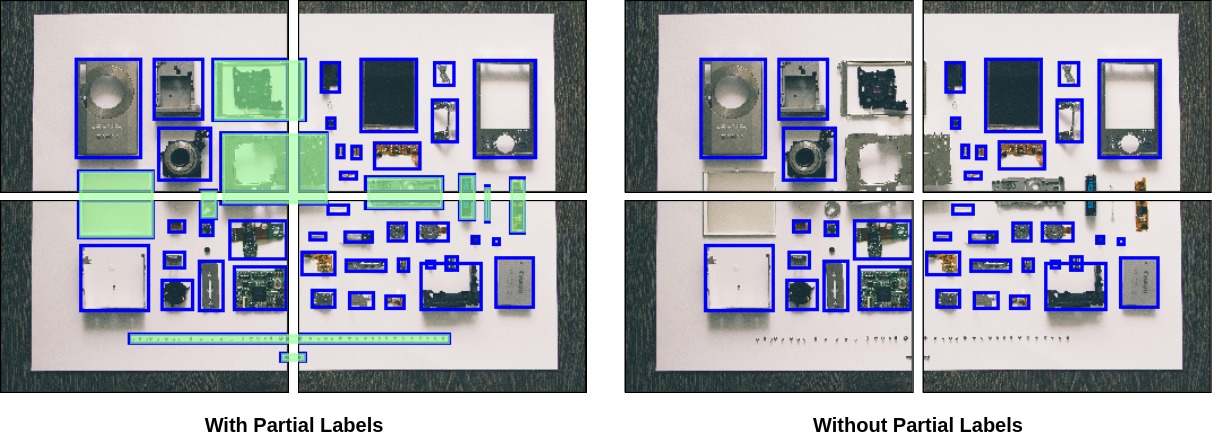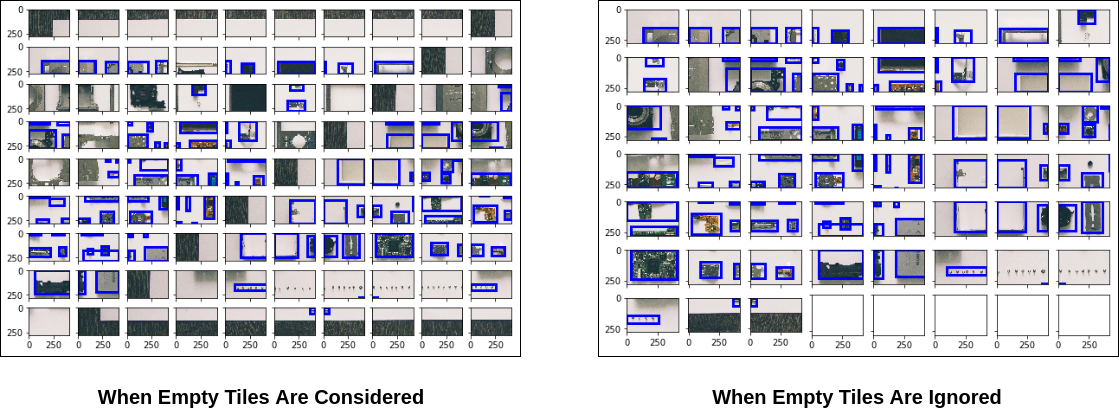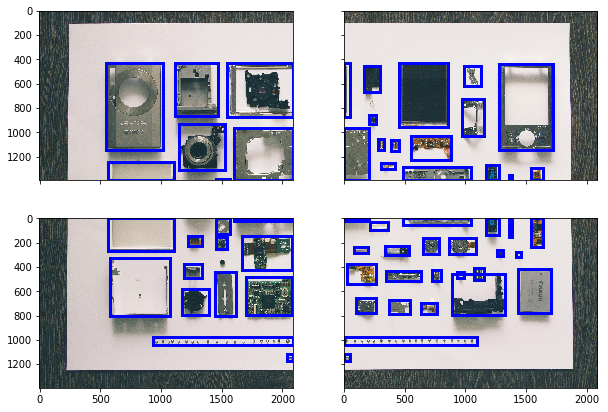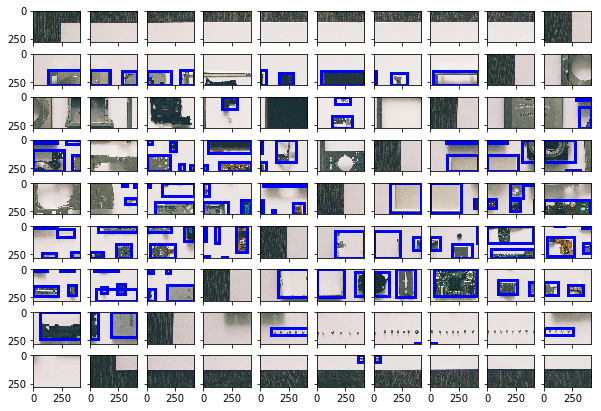Create And Configure Slicer Object
Note: This usage demo can be found in Slicing_Demo.ipynb in the project's repo.
Setting Paths To Source And Destination Directories
You must configure paths to source and destination directories like the following. By default it takes the current working directory as the source folder for both images and annotations and also creates new folders:
/sliced_imagesand/sliced_annotation
in the current working directory.
import image_bbox_slicer as ibs
im_src = './src/images'
an_src = './src/annotations'
im_dst = './dst/images'
an_dst = './dst/annotations'
slicer = ibs.Slicer()
slicer.config_dirs(img_src=im_src, ann_src=an_src,
img_dst=im_dst, ann_dst=an_dst)
Partial Labels

The above images show the difference in slicing with and without partial labels. In the image on the left, all the box annotations masked in green are called Partial Labels.
Configure your slicer to either ignore or consider them by setting Slicer object's keep_partial_labels instance variable to True or False respectively. By default it is set to False.
slicer.keep_partial_labels = True
Empty Tiles

An empty tile is a tile with no "labels" in it. The definition of "labels" here is tightly coupled with the user's preference of partial labels. If you choose to keep the partial labels (i.e. keep_partial_labels = True), a tile with a partial label is not treated as empty. If you choose to not keep the partial labels (i.e. keep_partial_labels = False), a tile with one or more partial labels is considered empty.
Configure your slicer to either ignore or consider empty tiles by setting Slicer object's ignore_empty_tiles instance variable to True or False respectively. By default it is set to True.
slicer.ignore_empty_tiles = False
Before-After Mapping
You can choose to store the mapping between file names of the images before and after slicing by setting the Slicer object's save_before_after_map instance variable to True. By default it is set to False.
Typically, mapper.csv looks like the following:
| old_name | new_names |
|------------|---------------------------------|
| 2102 | 000001, 000002, 000003, 000004 |
| 3931 | 000005, 000005, 000007, 000008 |
| test_image | 000009, 000010, 000011, 000012 |
| ... | ... |
slicer.save_before_after_map = True
Slicing both images and box annotations at the same time.
By Number Of Tiles
slicer.slice_by_number(number_tiles=4)
slicer.visualize_random()


By Specific Size
slicer.slice_by_size(tile_size=(418,279), tile_overlap=0)
slicer.visualize_random()


Note: visualize_sliced_random() randomly picks a recently sliced image from the directory for plotting.